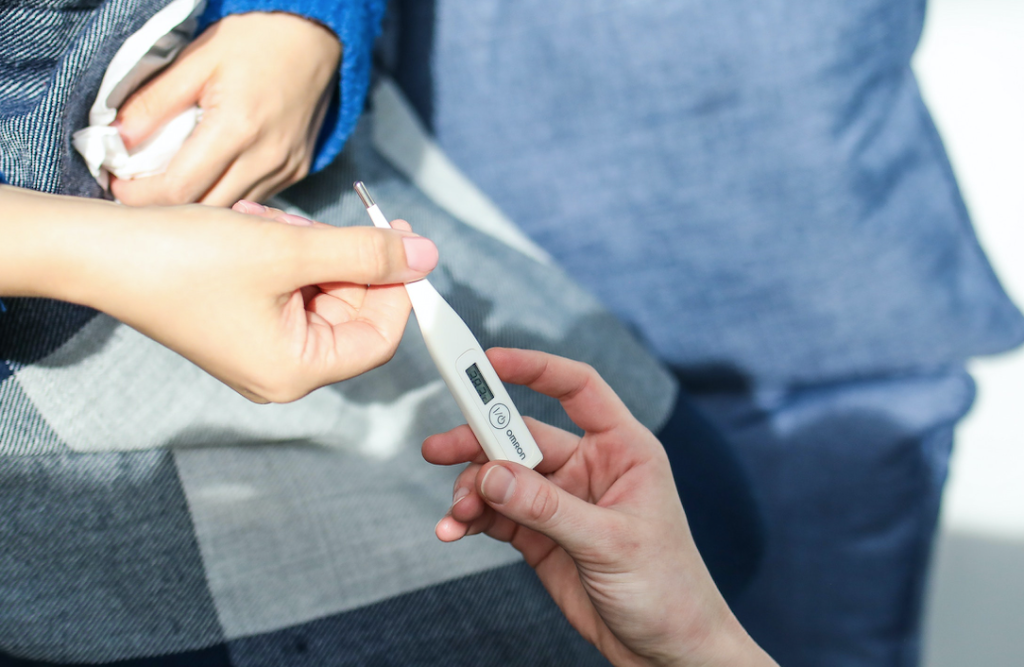Children’s Fevers and How to Treat Them
Fevers are common childhood ailments that affect millions of children daily. While compared with adults, children get fever more frequently. The good news is that parents can easily treat their children’s fevers at home without having to visit a doctor or hospital.
Fever comes from our body’s attempt to fight off infection. When a child gets sick, his/her temperature rises due to inflammation caused by bacteria or viruses. During a fever, the body produces chemicals called pyrogens that trigger the production of white blood cells and increase the flow of blood through the capillaries. These actions prepare the body for fighting off infections. Some people have a higher resistance to fever than others. Fevers may cause redness and swelling around the nose and mouth. A fever usually goes away in 1 to 3 days, but fevers are uncomfortable and unpleasant for both kids and parents.
Parents often try to reduce fever symptoms by giving their child cold drinks, ice packs, or Tylenol (paracetamol). These methods might temporarily relieve pain and discomfort, but they won’t cure the problem. In addition, these treatments can cause other health problems such as an upset stomach upset or dehydration. Instead, parents should focus on treating the root cause of fever
What conditions can cause a fever?
There are many different types of infections that can lead to high temperatures. Some of them include:
- Viral infections: Common viral infections that can cause fever include chickenpox (varicella), influenza, mononucleosis, measles, mumps, rubella, and shingles.
- Bacterial infections: Bacteria can also cause fever. Examples include strep throat, pneumonia, scarlet fever, and whooping cough.
- Parasitic infections: Parasites can cause fever. Some parasites include malaria, hookworm, pinworms, roundworms, tapeworms, and whipworms.
- Fungal infections: Fungi can cause fever. They may come in the form of ringworm, athlete’s foot, jock itch, diaper rash, thrush, and yeast infections.
What are the symptoms that my child may have a fever?
- Redness around the eyes and cheeks
- Sore throat
- Headache
- Cough
- Fatigue
- Difficulty breathing
Alarming Signs
A child is considered to have a fever when their temperature is greater than 100.4 degrees Fahrenheit (measured rectally), 99 degrees Fahrenheit (measured under the arm) or 99.5 degrees Fahrenheit (measured orally). A fever over 101 degrees Fahrenheit, or 37.8 degrees Celsius measured from anywhere, is considered severe. It means that the child needs medical care immediately. A fever under 101 degrees isn’t necessarily safe, but should not go untreated. Kids with fevers below 101 degrees should drink plenty of fluids and avoid strenuous exercise. Most fevers last between 24 hours and three days. The length of time depends on several factors including the type of infection and how strong the immune system is.
Treatment of Fever in Children
If your child has a fever, it’s essential to take steps to prevent complications. Here are some simple guidelines to follow when treating a fever:
- Keep your child hydrated by offering him/her plenty of fluids. Offer water, juice, milk, soup, broth, tea, or popsicles. Avoid sugary beverages like soda.
- Make sure your child doesn’t become dehydrated. Offer sips of cool water instead of large amounts of liquid. Check the color of your child’s urine. Yellow indicates that he/she isn’t getting enough fluid.
- Give your child Tylenol (paracetamol) if he/she has a fever. This medication is available without a prescription at drugstores and pharmacies. Ask your pharmacist about dosage recommendations for children.
- Do not give aspirin or antibiotics to your child unless directed by your doctor. Aspirin can be dangerous to children because it can cause bleeding inside the brain. Do not give aspirin or ibuprofen to infants under six months old.
Home Remedies for High Fever Treatment in Children
1. Ice Therapy
2. Cold Compresses
When should I call my child's healthcare provider?
Call your child’s healthcare provider if your child has a high fever (over 101 degrees) for more than 24 hours. He/she will want to know how long your child has been febrile, what other symptoms your child has had, and if your child seems to be improving.
You should always seek medical attention for your child if he/she has any of these symptoms:
- Seizures
- Vomiting and diarrhea
- Loss of consciousness
- Persistent vomiting
- Very low blood pressure or heart rate
- Lethargy
- Unusual sleep patterns
- Skin rash
- Swollen glands
How to Prevent Fever in Kids
1. Keep Your Child Hydrated
2. Eat Well-Balanced Meals
3. Exercise Regularly
Key Takeaways
Use medimap.ca to find walk-in clinics in your area and access the care you need.
About the author

Dr Adil Maqbool
Dr. Adil is an accomplished medical writer, researcher, and doctor. He has published numerous papers in renowned medical journals and is recognized as an expert in the field. He is highly sought after for his medical writing, research, and patient care expertise. He takes great pride in his work and strives to stay up-to-date with the latest medical developments.
Certification
Registered Practitioner
Certified Doctor
Certified Medical Writer
Certified Peer-Reviewer
-
Dr Adil Maqboolhttps://medimap.ca/author/adil-maqbool/
-
Dr Adil Maqboolhttps://medimap.ca/author/adil-maqbool/
-
Dr Adil Maqboolhttps://medimap.ca/author/adil-maqbool/
-
Dr Adil Maqboolhttps://medimap.ca/author/adil-maqbool/



